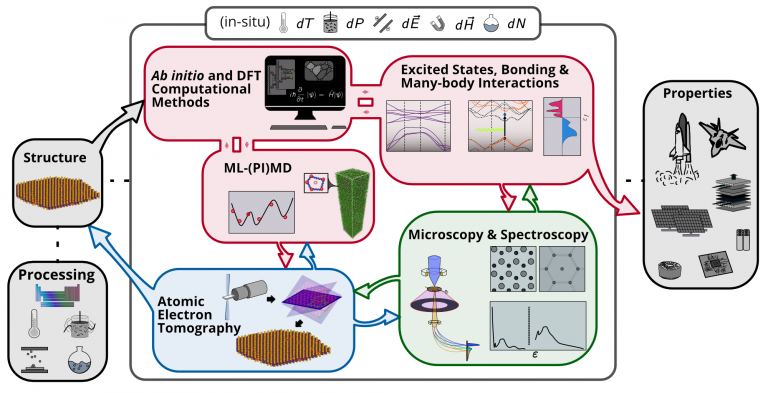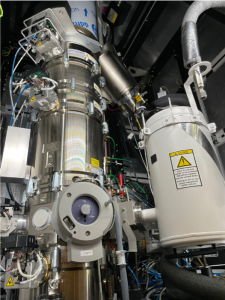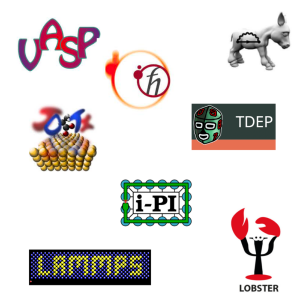
Our team is interested in engineering systems through defects and disorder on the picoscale (10-12 m). As the development and discovery of advanced systems and materials are needed to keep pace with the ever-changing societal demands. Instead of the trial and error approach, we utilize a multi-modal framework in-situ and feedback loops between 3D atomic coordinate information with picometer precision, state-of-the-art spectroscopy, and microscopy techniques with quantum mechanical computational methods to understand and discover new advanced materials from the atom up. Our group will focus on applications in thermal, energy, and quantum sciences.
Below is a figure of the feedback loops my research group will utilize to study materials in-situ. For more information about techniques used or previous work, refer to the Publications page.
Atomic electron tomography, which combines high-resolution electron imaging and computational algorithms developed in-house, can achieve true three-dimensional quantitative atomic structures at picometer precision without assuming crystallinity.
The study of condensed phases has benefited from the advancements in electron, x-ray, and neutron scattering techniques. The high brightness from X-ray and neutron sources to aberration correctors, monochromators, and direct electron pixel detectors allow for the probe of structure, dynamics, and excitations. The majority of our work is performed on state-of-the-art microscopes on campus (UF Research Service Centers). But we will often travel to use national user facilities as well.

Our Team uses an array of classical and quantum simulation methods to study the atomistic chemistry and physics of materials. Below are some examples of density functional theory (DFT) software packages and molecular dynamics with excited state codes. The group has access to an abundance of high-performance GPUs and CPU cores on UF’s HiPerGator supercomputing cluster.
